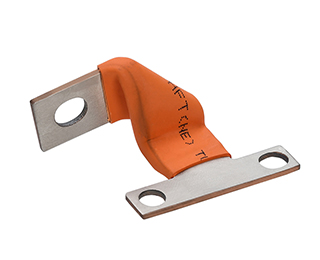2025-10-30 17:51:37
In modern electrical systems, copper busbars play a crucial role in distributing power efficiently and safely. Whether used in industrial switchgear, renewable energy systems, or electric vehicle (EV) battery packs, ensuring that a copper busbar is properly sized is essential to avoid overheating, excessive voltage drops, and potential equipment failure.

A copper busbar is a conductive metallic bar, typically made from high-purity copper, used for distributing large currents within electrical panels or between devices. There are various types, including:
Flexible Copper Busbar – Provides flexibility to absorb vibration and thermal expansion.
Solid Copper Busbar – Offers rigidity and high current capacity for fixed installations.
Laminated Copper BusBar – Combines multiple copper foils for compact, high-current applications.
Copper Busbar Connector – Enables secure connections between busbars and electrical equipment.
Choosing the correct busbar type is crucial before performing size calculations, as each has different thermal and mechanical properties.
When calculating copper busbar size, consider the following factors:
Rated Current (I) – The maximum current the busbar will carry continuously.
Allowable Temperature Rise (ΔT) – The temperature increase above ambient limits the current capacity.
Electrical Conductivity of Copper (σ) – Typically 58 MS/m for high-purity copper.
Length of the Busbar (L) – Longer busbars require larger cross-sectional areas to limit voltage drop.
Voltage Drop (ΔV) – Often limited to a percentage of the system voltage (e.g., 2–5%).
Short-Circuit Strength – The busbar must withstand mechanical forces during short-circuit events.
A common method uses current density to determine the required cross-section:
A=kI
Where:
A = Cross-sectional area (mm²)
I = Rated current (A)
k = Current carrying capacity factor (A/mm²), typically 1–2 A/mm² for open-air copper busbars, depending on insulation and cooling.
Voltage drop should not exceed the system tolerance:
ΔV=I×R
Where busbar resistanceR is:
R=Aρ×L
ρ = Resistivity of copper (0.017241 Ω·mm²/m at 20°C)
L = Length of the busbar (m)
A = Cross-sectional area (mm²)
Rearranging for A:
A=ΔVρ×L×I
This ensures voltage drop remains within safe limits.
Determine the Rated Current – Identify the maximum continuous current the busbar will carry.
Choose Busbar Type – Decide between flexible copper busbar, solid copper busbar, or laminated copper busbar depending on mechanical and thermal requirements.
Select Allowable Temperature Rise – Typically 30–40°C for standard copper, adjusted for insulation and ambient conditions.
Calculate Cross-Section Using Current Density – Use the formulaA=I/k.
Verify Voltage Drop – CalculateΔV=I×R and ensure it does not exceed system limits.
Check Short-Circuit Strength – Confirm busbar thickness and material can handle short-term mechanical stress.
Finalize Dimensions – Specify width and thickness based on calculated cross-section, mechanical support, and space constraints.
Add Connectors – Include Copper Busbar Connectors or Copper Busbar Connector custom designs for secure and modular installation.
Ensure proper spacing and insulation if using multiple insulated copper busbars.
Avoid sharp bends; use flexible copper busbar or Flexible Busbar connectors to reduce mechanical stress.
Consider thermal expansion and vibration in high-power applications.
For OEM/ODM projects, consult your Copper Busbar Supplier or Copper Busbar Manufacturer to optimize design and customization.
Perform short-circuit and thermal simulations for large systems.
Solid copper busbar and laminated copper busbar are widely used in switchgear, motor control centers, and power distribution boards.
Flexible copper busbar and copper busbar connectors are ideal for EV battery packs and modular connections, reducing vibration-related stress.
Photovoltaic inverters and wind turbines use laminated copper busbar to efficiently transfer high currents in compact layouts.
Copper Busbar Connector custom, Copper Busbar OEM, and Copper Busbar ODM solutions allow tailored electrical connections for industrial automation, UPS systems, and data centers.